- Home
- About Us
-
Our Services
- Root Canal Procedure
- Tooth Extractions
- Wisdom Teeth Extractions
- Implants
- White Dental Fillings
- Crowns (Dental Caps)
- Dental Bridges
- Teeth Whitening
- Dentures and Partial Dentures
- Oral Hygiene
- Teeth Cleaning
- Treatment of Periodontal (Gum) Disease
- Digital Photography
- Digital X-rays
- Sealants
- Oral Sedation
- Forms
- Our Blog
- Contact Us
- Home
- About Us
-
Our Services
- Root Canal Procedure
- Tooth Extractions
- Wisdom Teeth Extractions
- Implants
- White Dental Fillings
- Crowns (Dental Caps)
- Dental Bridges
- Teeth Whitening
- Dentures and Partial Dentures
- Oral Hygiene
- Teeth Cleaning
- Treatment of Periodontal (Gum) Disease
- Digital Photography
- Digital X-rays
- Sealants
- Oral Sedation
- Forms
- Our Blog
- Contact Us
|
How do you avoid coffee stains on your teeth? This is a question everyone has. Normally people start their morning with a cup of strong coffee. Coffee lovers are abundant, but the fact is that coffee is very acidic and contains Tannins. Enamel is the hardest part of teeth, it weakens due to acidic properties of coffee and leaves yellow stains on teeth. Drinking coffee in extra quantity is very dangerous for health and teeth because it can cause undesirable effects on both.
10 Tips to Keep your Teeth Stain-Free
0 Comments
We get it; adulting is hard. Taxes, spreadsheets, insurance, retirement, stocks, bonds, good arch support. We know there’s a lot coming at you when you age. So why add another thing to your list of things that could go wrong? Well, planning for long-term care (should you need it) is about planning to make your golden years go the way you want them to. It’s kind of like planning for vacation. You don’t want to get to Disney World and realize all the rooms are full or they’re out of Mickey Mouse waffles. If you plan ahead, and call to make sure there’s a room with your name on it, you’ll be much happier. Stay with us …
So what is long-term care? In a nutshell, long-term care encompasses any sort of help you may require if you are unable to live completely independently. If you’ve ever had surgery and had to sit on the couch recovering, you’ve experienced the need for some form of care. You likely needed help with grocery shopping, meal-making, and household chores. As we age, the need for this type of care naturally increases. So you might as well plan ahead and get what you want! Long-term care planning includes:
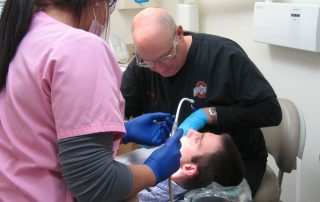 Getting Ready for a Root Canal A helpful guide for what you need to know First of all remember that if you have an infected tooth you can save it instead of having to do a tooth extraction by getting a competent dentist to perform a root canal procedure. If you’re getting ready for a root canal in Toledo, OH, remember that when the procedure is over, your pain will be relieved, not increased! Today’s technology and anesthetics make the procedure just about as uncomfortable as getting a tooth filling. There will certainly be some discomfort that lasts a day or two afterwards, but it’s really nothing you need to lose sleep over. When you’re getting ready for a Toledo, OH root canal, it’s very important to relax. Getting a good rest the night before your appointment will help to calm you, and allow you to think clearly. Make sure to eat a good, healthy meal before your procedure. Since your mouth will be numb for several hours after the treatment, you’ll feel better with a full stomach beforehand. Be sure to abstain from alcohol or cigarettes 12 hours before your root canal, too. Alcohol and nicotine can counteract the effect of local anesthesia. You wouldn’t want that! It’s also nice if you bring someone to your appointment with you. Knowing that a friend is there for you will make the root canal much easier to get through. They can then drive you home, where you’re free to spend the rest of the day resting your nerves. 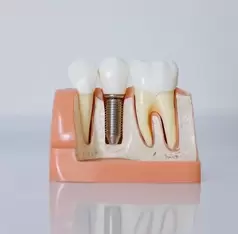 Why should I get dental implants instead of dentures Missing teeth is one of the most common dental problems in older adults. According to the American Association of Oral and Maxillofacial Surgeons, more than 70 percent of adults over the age of 35 are missing one or more of their teeth. A missing tooth may be a source of embarrassment and may cause difficulty with eating, speaking and smiling. Fortunately, today’s dental implants offer a permanent solution to the problem of tooth loss. Comfort Dental implants are a more comfortable option compared to dentures. Implants are permanently placed in the mouth. There is no need for messy adhesives. The implants will not slip and slide around while eating or talking. As the jaw bone degrades with age, dentures can lose their fit and require relining or even replacement by a dentist every few years. Appearance Thanks to recent technological advances in cosmetic dentistry, dental implants can be made to look just like your natural teeth. The implants are designed by cosmetic dentistry specialists to have the same color as your teeth so they blend right into your mouth. Dentures can become scratched by abrasive cleaners and the pink portion of the denture can become bleached white, making these dental appliances obvious to others. A dental implant also helps maintain the health and shape of your jaw bone, which provides the contours and shaping of your face. A dental implant is cleaned just like the rest of your teeth. You can continue to use your favorite floss, toothpaste and mouthwash. With dentures, you’ll need to take them out every night and clean them with a special cleanser. The dentures may also need to be soaked on a regular basis. Improper denture maintenance can result in oral infections and promote cavities in your remaining natural teeth. Durability A dental implant can last for 20 years or longer with proper care. A denture, on the other hand, needs to be relined every year or two and requires full replacement every 5 to 7 years as a result of wear and tear and the changing configuration of your jaw bone. A dental implant is not just a solution for people missing a single tooth. They can also be used in people missing multiple teeth. An experienced implant dentist can help determine whether you are a candidate for dental implant surgery. 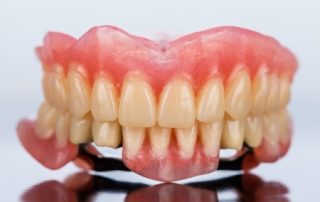 Dental Bridge Problems and the benefits of getting them fixed With good oral hygiene and regular visits to the dentist, a well-constructed dental bridge can last for about 10 to 20 years. However, a poorly constructed one can lead to various complications that will continue for quite some time. In addition to putting them in, a dentist can also sort out different dental bridge problems. The following are some of the common dental bridge problems: Falling out When a person’s dental bridges begin to fall out or start to get loose, they should take it as a warning that there are some underlying issues. One of the reasons behind this problem could be that the mechanical preparation of the tooth was inadequate. This means that the tooth was insufficiently trimmed down. Other reasons could be the underlying tooth started to decay, or that the bridge wasn’t properly constructed in the dental laboratory. Fractures A porcelain fracture can also lead to dental-bridge problems. A fracture refers to a hairline break within the dental bridge. This particular problem occurs mainly for of two reasons, the first one could be there was processing error in the dental laboratory, and the other could be there was a flaw in the construction of the dental bridge. However, fractures can be corrected by a qualified dentist. Space Another problem that occurs with dental bridges is when there is space between the trimmed tooth and the bridge. Such a problem means that the tooth is not completely covered as it should be. In addition, the unwanted space can lead to more problems. For example, it will become the main target for cavities and tooth decay. Size The size of a dental bridge or crown can be a problem. A person’s dental bridges are customized to fit their mouth. However, issues can arise when the dental bridges or crowns are either too bulky or too slim. Food may be trapped in the bridge if it’s too slim, or there could be some cheek irritation if it’s too bulky. Insufficient Number of Replacements Dental bridges are intended to cover trimmed teeth or replace missing ones. However, a problem could arise if the dental bridges aren’t constructed to replace the required number of teeth. For instance, if you have 4 missing teeth and your dentist believes that you can’t handle a large bridge, he or she will order a bridge with 3 crowns from the dental lab instead of 4. As a result, you will have a dental bridge that is struggling to replace multiple gaps using an insufficient amount of teeth. The good news is all the dental bridge problems mentioned above can be easily rectified. Allowing a qualified dentist to deal with these problems will lead to some the following things:
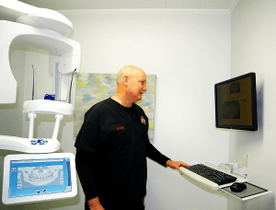 Americans are notorious for avoiding one very important semiannual errand: going to the dentist. There are many reasons they avoid the infamous chair, mostly due to preconceived notions that there is always pain associated with dental checkups and cleanings. Finley Dentistry is here to change the way Toledo views dentistry. Their goal is to make the Toledo area smile again, one tooth at a time! The Pain Factor Often, when patients finally do come in for their cleaning (which may become a once per decade event), they often have a variety of oral issues going on. This is where the pain association comes in. Studies dating back for several hundred years show that both children and adults who regularly attend their dental checkups and cleanings are less prone to unpleasant dental procedures, such as root canals, fillings, gingivitis and even tooth loss or repair. When it comes to dentistry, prevention is the key. One of the most painful cases patients experience in the dental chair is gingivitis. This is a fancy name for ‘gum disease’ which can occur in patients for all ages. Gum disease may even start out asymptomatic, but will likely progress into a painful disease which may impair speech and even affect digestion. If left untreated, this may even develop into periodontitis, which is a severe inflammation of the gums. Overall Health Very few of us realize how deeply our oral health affects us. The Center for Disease Control has conducted various studies which prove that those who take care of their oral health regularly are less likely to develop other pathology, beyond just the mouth. For example, when researching a group of diabetics, studies show that those who did not take care of their oral health properly actually worsened their condition over time. Additionally, those who suffer from autoimmune disease or deficiencies are also more susceptible to dangerous oral disease. Patients who are undergoing treatment for cancer has this issue as well, so visiting the dentist as regularly as their primary doctor is a must. The Cost Factor In addition to the physical pain which many individuals fear when it comes to the dentist, many others fear the cost of dental procedures as well. However, with many new dental insurance plans on the market, there is truly a plan to fit everyone. The best step is to make an appointment for a checkup and cleaning (where your mouth will be evaluated for any oral pathology, including gum, nerve root and enamel damage) and decide how much or how little dental coverage you may need. Dr. Finley and his professional team will guide you in the right direction towards a brighter smile! The Convenience Factor Dr. Finley understands how hectic life in Toledo can be. This is why, his office is designed as a one-stop dental shop! He will thoroughly examine, clean and evaluate your teeth for any work that needs to be done. He will then prepare a diagnostic plan for any of these findings and set you up with an appointment which fits your busy schedule. We know that when running errands, location is key. Call Finley Dentistry at (419) 472-6645 to see how easy dentistry can be!  Every year when we go to our annual dental checkup and cleaning, we sit in the dental chair hoping and praying that we don’t hear any bad news. Most commonly, the one word we are trying to avoid is “cavity.” A cavity is defined as a small hole within the tooth enamel, which is caused by decay. In most cases, cavities can be treated with a procedure called “filling.” What To Expect Receiving a filling entails a few essential steps. Once you receive the news that you have been diagnosed with a cavity, your dental professional will begin by removing the decayed part of the tooth. Once all of the decay has been (gently!) scraped away, the space must be filled to avoid any further damage to the inner structures and nerves of the tooth. In some cases, filling procedures can also be used for other cases, such as broken or cracked teeth (often caused by nighttime teeth grinding or biting habits). Before the tooth is filled, the dentist will use a local anesthesia (most commonly Novocain) to numb the surrounding areas. After a few minutes, you should be unable to feel any sensation in this area and your dentist will use an instrument which utilizes air abrasion (or a drill) to remove any leftover remnants of decay. After 100% of the damaged tooth has been removed, a probe will be used to confirm this. The area will then be cleaned thoroughly to get rid of any leftover debris. Next, a tooth colored filling will be chosen according to your exact enamel shade, for a most natural look. This material is meticulously applied in several steps, which includes applying different layers to the remaining tooth. After all necessary layers have been applied, a light will be placed on the tooth to cement and harden the material into a strong, durable substance. Once all has hardened, the dentist will carefully shape and contour the material to create a natural tooth shape, nearly identical to your original tooth structure. Finally, your new and improved tooth will be polished to perfection! At the offices at Finley Dentistry we treat each patient as a whole, not just teeth and gums. Whatever you end up requiring, our goal for you is a healthy body and a healthy mouth. Call today to schedule your appointment with us at Finley Dentistry located in Toledo, Oh. 419-472-6645  There are many reasons to visit a dentist in the Toledo area. Just like you take your call for an oil change and tire rotation, you should go to the dentist for regular maintenance. Although the mouth does get cleaned regularly at home, it is important to also go for a professional checkup and cleaning at Finley Dentistry. Preventative Maintenance For most, six months is the standard time between regular dental checkups and cleanings. This time period was set after many years of dental research worldwide, as this is the amount of time it takes for plaque to build up in the mouth, even with regular brushing, rinsing and flossing at home. It is also important to speak with the dental specialists at Finley Dentistry, to learn the best methods and products for at home dental hygiene. What Will Dr. Finley Look For? There are several state of the art dental instruments which are used at Finley Dentistry, to allow visualization of the crevices of the mouth. It is most difficult to see certain areas at home, such as the back of the mouth where the molars sit or the deep gum line, closest to the roots of the teeth. These areas are most prone to cavity formation, which can lead to more complicated dental pathology (such as the need for a root canal or even deterioration of the enamel) if they are not treated in a timely manner. Better Safe Than Sorry While millions of Americans nationwide admit to postponing or cancelling many dental appointments and treatments, this is not recommended. Overall health starts with one of the highest points, the mouth! In addition to cleaning your teeth, the experienced team of dental professionals at Finley will also conduct a thorough examination of the teeth, gums, tongue and interior cheeks. This will ensure that you do not have any areas where oral disease may be present, such as certain growths which may develop into oral cancer or periodontal disease. Your mouth serves so many purposes. It is the area which allows you to consume your favorite foods and speak with your loved ones. Call Finley Dentistry today, the Toledo, Ohio dental specialists at (419) 472-6645. 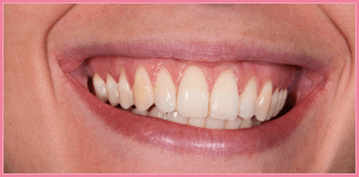 Gums often go unnoticed within the mouth, but they are actually an essential part of your oral and overall health. The gums act as an anchor for our teeth and other oral structures. People often tend to focus on their teeth when it comes to dental care, but we are here to remind you to remember to give those gums some loving too! Just because you have a shiny, white, pearly smile doesn’t necessarily mean your teeth are healthy. Although color and texture of the enamel are very important factors, their base is essential too. If you experience any discomfort or bleeding when brushing the gums, it is important to consult your dental professional right away, because this can be a serious sign of periodontal pathology, or as we call it, gingivitis. Beyond The Gums! Gingivitis is an inflammation of the gums, which begins in a mild stage. If you do not treat this at the source, it can further progress into a more advanced form of gum disease. This will cause many unpleasant side effects, such as: bad breath, severe bleeding gums, bad taste in the mouth, visible pus within the mouth and even tooth loss. In addition to tooth loss, it may be difficult to even place dental implants, because the roots, or gums, are compromised and unable to support the structure. There are a variety of different patients which must look out closely for any signs of gum disease. Those suffer from underlying cardiac issues, diabetes or even several forms of respiratory disease are extremely prone to the complications which periodontal disease may cause. Although the connection is not obvious to most patients or their families, gum disease will actually increase the risk of clogged arteries. In some cases, this may even lead to a stroke. Patients who are diabetic often have difficulty controlling their glucose levels when they have compromised gums and this may even affect their ability to digest certain foods. Those who suffer from Upper Respiratory Infections may worsen their chances by leaving their gums undiagnosed and untreated, as this is an opportunity for their bacteria to grow and develop within the body. Periodontal Disease There are several conditions and diseases which can unfortunately predisposition people to have gum disease. These include, but are not limited to, diabetes and even certain medications. In some cases, medicine can dry out the mouth, including the tongue and gums. In turn, less saliva is produced and pathology can develop. So keep your gums looking and feeling great this winter! Call the team at Finley Dentistry, the gum experts, at (419) 472-6645 or visit FinleyDentistry.com  What Are Dentures? A denture is a solution for missing teeth. Modern day dentures are made to look as natural as possible. They are made of a combination of metal, porcelain and special acrylic plastic. A complete denture would replace all of the teeth, while a partial denture would be used in order to replace only the missing teeth, or the gaps. These days, dentures are made to look and feel like just natural teeth and gums. They are made of special material which can match the color and even texture of your real tooth enamel, leaving them undetectable. Who Are Good Candidates For Dentures? There is a stigma which exists which leads people to believe that dentures are only meant for the elderly. However, missing teeth can happen at any age, whether from a trauma, illness or chronic disease. Those who suffer from tooth loss have an option between dentures or implants. For many dentures are the better choice, but a consultation with Dr. Finley will help you determine which you are best suited for and why. What Does The Process Entail? Having dentures placed takes a few steps and a few office visits as well. In some cases, some of the natural teeth must be removed in order for the denture to be placed (whether complete or partial). In this case, the extraction would come after the consultation visit. During that same visit, Dr. Finley may place an immediate denture inside the mouth as needed, to reduce the bleeding. This would act as a band aid, until the gums and surrounding structures of the extraction sites have healed. Once the mouth has healed, it is time to place a conventional denture. In most cases, this happens eight to twelve weeks following the extraction(s). This will act as the permanent denture, or set of dentures. These will be formed and ordered ahead of time, based on impressions taken in the office. They will be designed to be a custom fit, so that they can be placed perfectly inside your mouth. A well-fitted denture will take some time to adjust to, but once you have gotten used to them you should be able to enjoy food, beverages and speaking and smiling freely for years to come! |
Archives
March 2023
Categories |
Privacy Policy
(419) 472-6645 | 3130 W Sylvania Ave, Toledo, OH 43613, USA
© E. Roy Finley Dentistry 2024 | All Rights Reserved
(419) 472-6645 | 3130 W Sylvania Ave, Toledo, OH 43613, USA
© E. Roy Finley Dentistry 2024 | All Rights Reserved




 RSS Feed
RSS Feed
